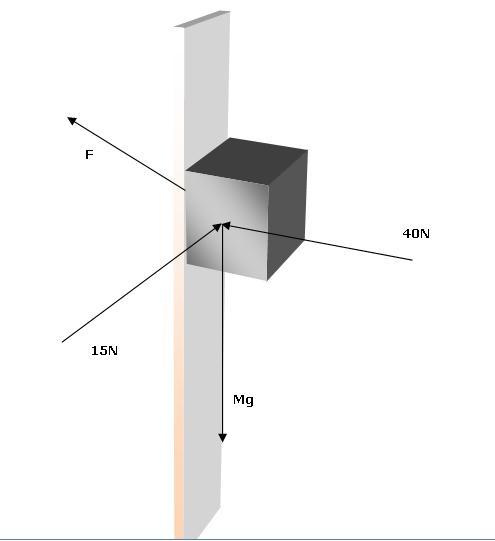its a pretty straightforward question ,
the block will move as when we calculate the resultant of the two forces =√400+225=25>μ*40=20
direction = 57° from the horizontal(just tan-120/25) downward , frictional force =20
A BLOCK OF MASS 2kg is pushed against a rough vertical wall with a force of 40N..coefficient of static fricion being 0.5. Another horizontal force of 15N ,is applied on the block in a direction parallel to the wall. Will the block move? If yes , in which direction?If no, find the frictional force exerted by the wall on the block.
(this is Ques. 29 of HC verma of friction chapter)
its a pretty straightforward question ,
the block will move as when we calculate the resultant of the two forces =√400+225=25>μ*40=20
direction = 57° from the horizontal(just tan-120/25) downward , frictional force =20

Here is the diagram for reference..
Note that F is along the plane of the wall...
why wont the friction which will act in upward directioon b considered for calculatin of direction of movement?????
Well, few comments
* The block will start moving with an initial acceleration=(25-20)/2
=2.5 m/s2, which would gradually increase since the friction force will reduce (to kinetic friction).
* If we would consider the wall to be the x-y plane, then the direction of motion of the block will be tan-1(20/15) below x-axis